One of our best resources are the fantastic and highly informative index cards. Capable of unlocking our collections, they are a good place to start any research. Use this guide to find the right index for you.
While they are a fantastic treasure chest of information, it is important to note that the index cards have not been added to in recent years so should be used along-side other finding aids, such as these research guides!
Classification index
For any topic, the first place to look is our classification index. This index will let you know if there are any local history material or photographs that relate to your research topic. The index covers a huge variety of information including:
- Names
- Themes
- Streets
- Organisations
- Buildings
- Businesses
- Institutions
- People
- Societies
Once you've found the classification number you can search our open access shelves or ask our archivist to collect the image folder from our onsite stores.
Case study: Searching for the Save Our Baths Campaign
Step 1. Classification index
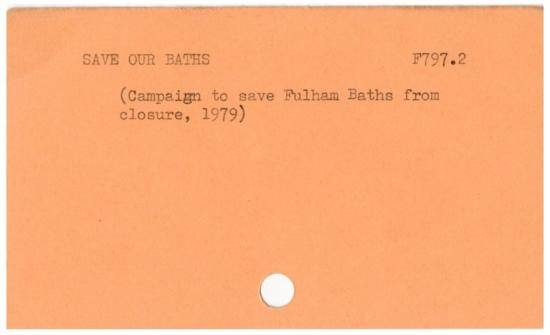
The index card for Save Our Baths may look empty, but the number in the right-hand corner is all we need: F797.2
Step 2. Local studies collection
Using the classification number, we are able to identify a whole folder of treasures that tell the tale of the campaign group who fought to save Fulham Baths by any means possible, including an 11 month occupation!
The folder includes press cuttings, newsletters and leaflets from the SOB campaign.
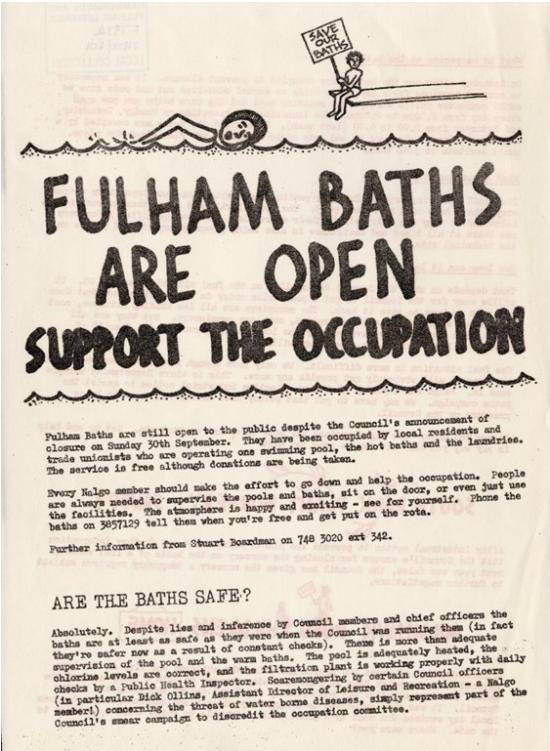
Information and name index
Our information and name index can help fill in missing gaps. While the index is not exhaustive, it can highlight collections of interest or snippets of information.
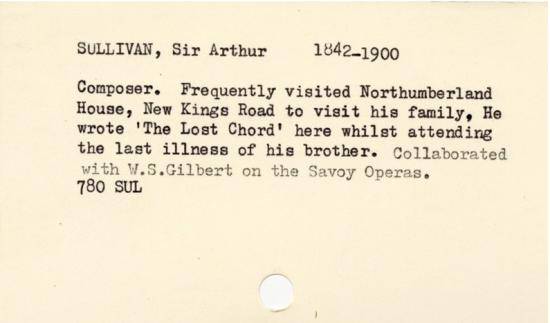
Street index
Sometimes the classification draws a blank, especially when exploring house and street histories. This could be because we don't have any material or that the name you are searching for has been abolished. The street index is the place to look for this information.
Case study: Hunting for Wharton Road
Step 1. Street index
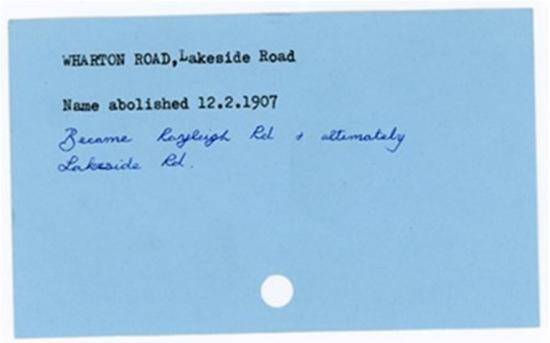
The street index card for Wharton Road reveals that the name was abolished in 1907 and replaced by Rayleigh Road and finally by Lakeside Road.
Step 2. Classification index
While Wharton Road may not have appeared, Lakeside Road did revealing the classification number H913.3 LAK
Step 3. Local studies collection
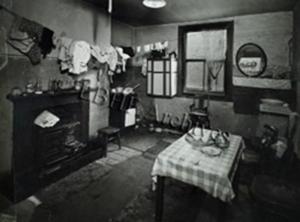
Finally we are able to see what Wharton Road would have looked like with this image of the interior of a house on Lakeside Road taken in the 1940s
Newspaper index
There have been two periods when newspapers have been indexed: 1856 – 1862 1927 – 1991
For both indexes the format used is individual catalogue cards housed in catalogue drawers.
1856 – 1862 index of the West London Observer
Index fairly comprehensive with an emphasis upon per- sonal names (births deaths & marriages). Some references to streets, buildings and commercial concerns.
1927 – 1991 index
This is an index of several titles that were in existence at various times during this period including:
- Fulham Chronicle 1927 – 91
- Fulham Gazette 1927 – 60, 1962 – 62, 1968, 1970 – 71
- West London Observer 1930 – 41, 1943 – 64, 1966, 1968, 1970 – 84
- West London Leader 1984 – 1987
- Shepherds Bush Gazette (& its variants in title) 1988 - 9
The index is fairly comprehensive. There is a greater emphasis upon organisations, events and places.




Other indexes
This section highlights some of the smaller but no less important indexes in our search room.
Air Raid Index Hammersmith/Fulham
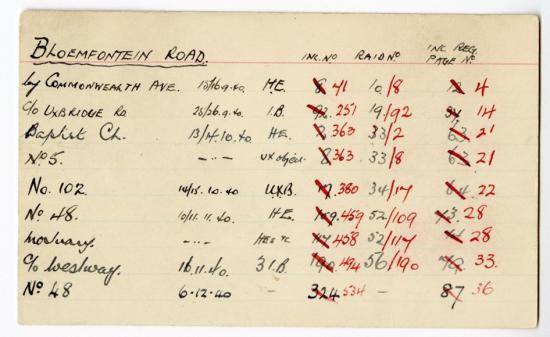
Organised by street, this index lists the date, incident number and raid number for bombings during WWII.
Metropolitan Borough of Hammersmith Civilian Casualties
Arranged by name, these cards capture the address, hospital and—where appropriate—burial place of peo- ple hurt during WWII bomb strikes.
Drainage Plan Index
Accessible by staff only, these cards are arranged by house number and indicate whether a drainage plan was created.